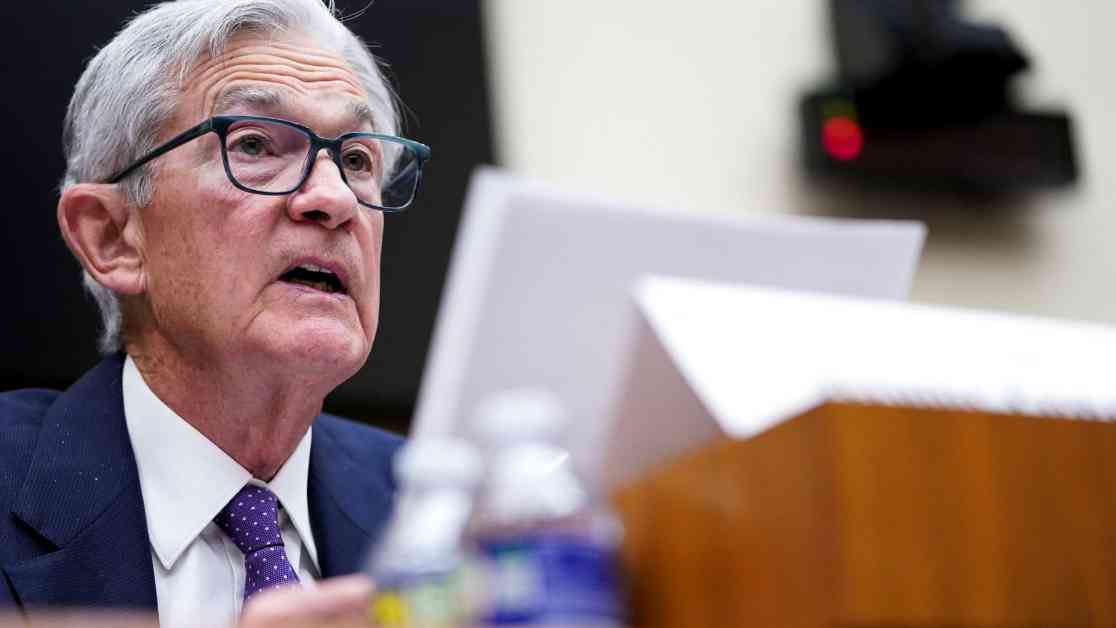A pivotal shift in market dynamics has set the stage for a recalibration in Federal Reserve policy, as recent data points to a postponement in expected interest rate cuts. Following a disconcerting inflation report earlier this week, the likelihood of a rate reduction before September, or possibly even by the end of the year, has significantly diminished. This turn of events underscores the gravity of the situation, with implications that reverberate across Wall Street and Main Street alike.
The Consumer Price Index (CPI) released in January revealed a 0.5% monthly increase, propelling the annual inflation rate to 3%, nudging slightly above the previous month and nearly on par with the figure from January 2024. When excluding volatile food and energy prices, the core inflation rate surged to 3.3%, signaling persistent upward pressure on prices that surpass the Federal Reserve’s target threshold. This development has prompted widespread concern among economists and market analysts, painting a somber picture of the economic landscape.
Bill Adams, chief economist at Comerica, articulated a sentiment echoed throughout financial circles, emphasizing the implications of this inflationary uptick. “The Fed will interpret January’s inflation data as a validation of ongoing price pressures within the economy,” Adams remarked, hinting at a potential shift in the central bank’s approach to monetary policy. The prevailing sentiment among experts points towards a scenario where the Fed may opt to curtail or altogether halt its rate-cutting agenda for the remainder of 2025.
Federal Reserve Chair Jerome Powell’s testimony before the House Financial Services Committee provided further insight into the central bank’s stance on inflation and policy trajectory. While acknowledging progress in taming inflation from its peak, Powell emphasized the need for continued vigilance, hinting at a reluctance to ease policy prematurely. As the Fed strives to achieve a 2% inflation target, the latest CPI report casts doubt on the viability of further rate cuts, as evidenced by market sentiment and futures trading data.
Market Sentiment and Rate Expectations
Investors’ expectations for future rate cuts have markedly shifted in response to the latest economic data. Futures markets, which initially priced in a rate cut as early as June, have now pushed back the timeline to at least September, with a diminishing likelihood of subsequent reductions in 2025. The recalibration of market sentiment underscores the growing apprehension surrounding inflation and its potential impact on monetary policy decisions.
According to the CME Group’s FedWatch gauge, the probability of a rate cut in March stands at a mere 2.5%, reflecting a significant departure from earlier projections. The evolving landscape of rate expectations paints a cautious picture of the Fed’s path forward, with uncertainties lingering well into the latter half of the year. While the fed funds rate currently hovers between 4.25% and 4.5%, the prospect of a second rate cut in 2025 remains a matter of speculation, underscoring the complexities of the current economic environment.
Implications for Trade Policy and Inflation Outlook
The confluence of factors shaping the inflation landscape extends beyond domestic economic indicators, with trade policy playing a pivotal role in the Fed’s deliberations. President Donald Trump’s aggressive stance on tariffs adds a layer of complexity to the inflation equation, potentially exacerbating price pressures and complicating the central bank’s objectives. As global trade tensions persist, the specter of inflation looms large, casting a shadow over the feasibility of further rate cuts in the near future.
James Knightley, chief international economist at ING, voiced concerns over the inflationary risks posed by potential tariffs, highlighting the challenges facing the Federal Reserve in navigating this uncertain terrain. The interplay between trade policy and domestic inflation dynamics underscores the interconnectedness of global economic forces, underscoring the need for a nuanced approach to monetary policy in the coming months.
While the CPI serves as a critical barometer of inflationary pressures, the Federal Reserve closely monitors the Personal Consumption Expenditures (PCE) price index as its preferred inflation gauge. The upcoming release of the PCE index by the Bureau of Economic Analysis will shed further light on the inflation outlook, offering valuable insights into the trajectory of core inflation. As elements from the CPI feed into the PCE reading, analysts anticipate a modest decline in core PCE for January, signaling a potential inflection point in the inflation narrative.
As investors and policymakers alike grapple with the evolving inflation landscape, the road ahead remains fraught with uncertainties and challenges. The delicate balance between price stability and economic growth will test the Federal Reserve’s resolve in the months to come, underscoring the need for a prudent and data-driven approach to monetary policy. As the implications of the latest inflation report reverberate through financial markets, the fate of future rate cuts hangs in the balance, shaping the contours of the economic landscape in 2025 and beyond.














